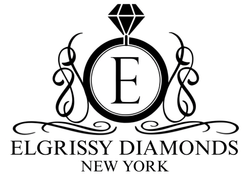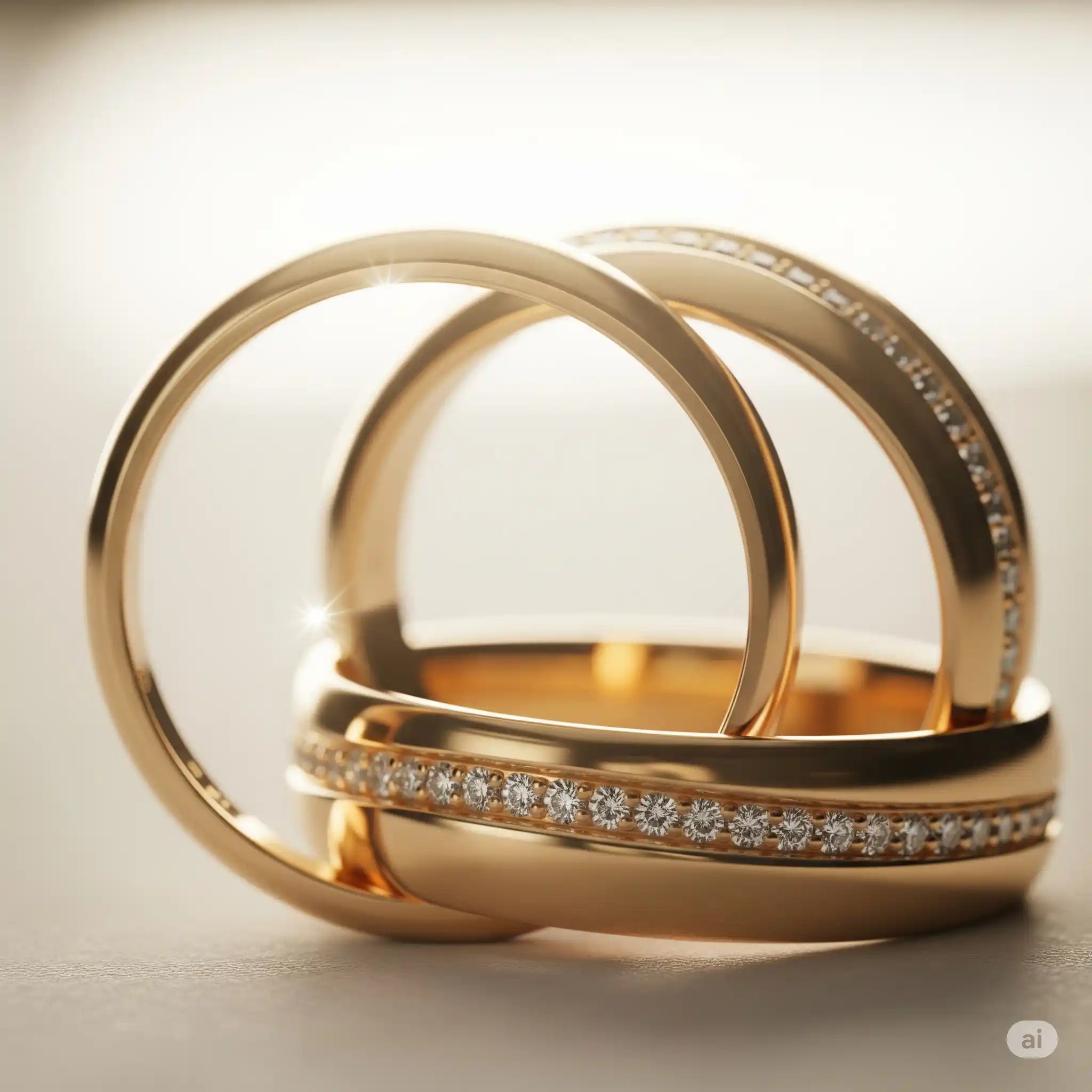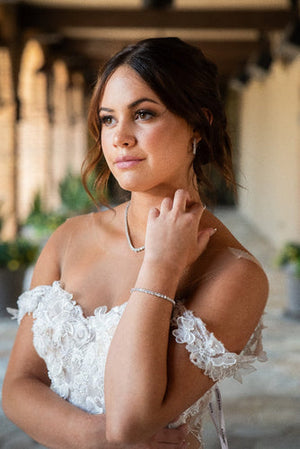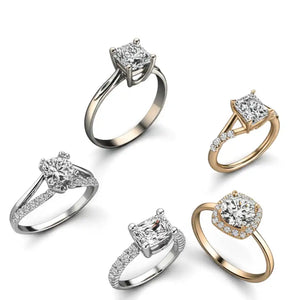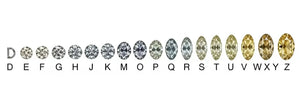Wedding rings are more than just jewelry - they’re powerful symbols of love, unity, and lifelong partnership. Worn on the fourth finger, exchanged in heartfelt ceremonies, or passed down through generations, these simple bands carry profound meaning across cultures and centuries. From ancient braided reeds to modern lab-grown diamonds, wedding rings have evolved in design and significance, yet their core message remains: a promise of eternal connection.
In this article, we’ll journey through the history of wedding rings, exploring their origins, cultural significance, and modern innovations. We’ll dive into the materials, traditions, and symbolism that make these rings so special, offering a comprehensive look at how they’ve shaped and been shaped by - human relationships worldwide.
Ancient Origins: The First Wedding Rings
The tradition of wedding rings began over 5,000 years ago in ancient Egypt, where couples exchanged rings made of braided hemp or reeds. The circle, with no beginning or end, symbolized eternity, while the open center represented a gateway to a shared future. Egyptians believed the “vena amoris,” a vein running from the fourth finger of the left hand to the heart, made this finger the perfect place for a ring - a romantic notion still cherished today.
These early rings were simple, often crafted from organic materials like leather or ivory as technology advanced. Despite their fragility, they carried deep spiritual meaning, prioritizing emotional bonds over material wealth.

In ancient Rome, wedding rings took on new significance. Crafted from iron and later gold, Roman rings symbolized strength, permanence, and sometimes ownership. They were often inscribed with names or phrases, laying the groundwork for today’s engraved wedding rings. For Romans, rings were as much a legal contract as a romantic gesture, reflecting social status and commitment.
By the Middle Ages, early Christian traditions embraced the wedding ring, despite initial hesitation due to its pagan roots. By the 9th century, rings became integral to marriage ceremonies, often adorned with religious symbols or gemstones for the wealthy, signifying divine blessing and unity.
Evolution of Wedding Ring Traditions
As societies changed, so did the role of wedding rings. What began as a practical or spiritual token transformed into a deeply personal symbol shaped by culture, religion, and technology.
From Contracts to Romance
In medieval Europe, wedding rings often served as legal proof of marriage. By the Renaissance, the focus shifted to romance, with poesy rings - engraved with love poems or vows - becoming popular. The Victorian era amplified this sentimentality, with rings featuring floral motifs, lockets, or hidden messages, celebrating love as both personal and poetic.
The Industrial Revolution made jewelry more accessible through mass production, popularizing the plain gold wedding ring as a universal symbol of marriage. This democratization ensured that couples across social classes could exchange rings, a tradition that endures in many cultures.
Religious and Regional Influences
Religious traditions have profoundly shaped wedding ring customs. In Christian wedding ceremonies, rings are exchanged as part of the liturgy, symbolizing a sacred covenant. Jewish wedding traditions require a plain, unbroken band - often gold - to signify purity and simplicity. Eastern Orthodox ceremonies include elaborate ring blessings, emphasizing spiritual unity.

The double ring ceremony, where both partners exchange rings, emerged in the United States during World War II. Soldiers, seeking a tangible connection to their spouses, helped popularize this practice, which is now standard in many Western cultures and gaining traction globally.
Engagement Rings vs. Wedding Rings
The distinction between engagement rings and wedding rings is a relatively modern development. Engagement rings, often featuring diamonds or gemstones, are given during proposals, while wedding rings are exchanged during the ceremony. The rise of diamond engagement rings was fueled by De Beers’ iconic “A diamond is forever” campaign in the 20th century, cementing diamonds as symbols of enduring love. Today, some couples wear both rings, while others opt for a single wedding band for simplicity.
Cultural Significance Around the World
The wedding ring’s universal appeal lies in its adaptability, with unique customs reflecting the diversity of global cultures.
-
Western Cultures: In the United States, United Kingdom, and much of Europe, rings are worn on the left hand’s fourth finger, tied to the “vena amoris” myth. The double ring ceremony is now common, with personalization through engravings or custom wedding rings reflecting individual stories.
-
Japan: The exchange of wedding rings became popular post-World War II, influenced by Western culture. Japanese couples value simplicity and craftsmanship, often choosing elegant, minimalist designs.
-
Islamic Traditions: In many Muslim cultures, wedding rings are a cultural rather than religious practice. Men may wear silver rings on the right hand (as gold is discouraged), while women often receive ornate designs during the nikah ceremony.
-
India: While mangalsutra, toe rings, and bangles hold deeper marital significance, Western-style wedding rings are increasingly popular in urban areas, often complementing traditional jewelry.
-
Eastern Europe: In Orthodox Christian traditions, rings are worn on the right hand and blessed during ceremonies. Simplicity and spiritual meaning often take precedence over extravagance.
-
Africa: In many African cultures, jewelry like beadwork or metal cuffs may symbolize marriage, but Western-style rings are growing in urban settings, blending with traditional rituals.
Materials: Tradition Meets Innovation
The choice of wedding ring materials reflects personal values, cultural traditions, and modern advancements.
Traditional Materials
-
Gold: Available in yellow, white, or rose, gold symbolizes purity and timelessness. Its karat (purity) varies by culture and budget.
-
Silver: Associated with clarity and balance, silver is a more affordable option.
-
Platinum: Known for durability and luxury, platinum is a modern favorite.

Gemstones and Diamonds
While traditional wedding rings are plain, many now feature diamonds, sapphires, or other gemstones. The diamond wedding ring history ties back to De Beers’ marketing, making diamonds a staple for both engagement and wedding rings.
Ethical and Sustainable Options
Growing environmental awareness has spurred demand for ethical wedding rings:
-
Lab-grown diamond rings: Chemically identical to mined diamonds but eco-friendly.
-
Recycled gold wedding rings: Made from reclaimed metals to reduce mining impact.
-
Fair-trade materials: Sourced with transparent, ethical practices.

Modern Craftsmanship
Handmade wedding rings remain cherished for their artisanal quality, while 3D-printed wedding rings offer precision and innovative designs. These technologies allow couples to create unique, meaningful pieces that reflect their personal stories.
Symbolism: The Heart of the Wedding Ring
The wedding ring’s power lies in its symbolism, transcending its physical form:
-
The Circle: Represents eternity and unbroken commitment, a universal emblem of love.
-
Love and Fidelity: Wearing a ring signals loyalty and partnership to the world.
-
Cultural and Religious Meaning: From Christian traditions viewing rings as divine covenants to Claddagh rings in Irish culture symbolizing love, loyalty, and friendship, rings carry layered significance.
-
Personalization: Engravings, custom designs, or meaningful materials make each ring a unique story of a couple’s journey.
Manufacturing: Craftsmanship and Technology
The creation of wedding rings blends ancient artistry with modern innovation:
-
Traditional Techniques: Lost-wax casting and hand-engraving create unique, artisanal pieces.
-
Modern Methods: Computer-controlled milling and laser engraving ensure precision, while 3D printing enables complex, custom designs.
-
Sustainable Practices: Ethical sourcing, recycled metals, and lab-grown diamonds align with modern values, reducing environmental and social impact.
Digital tools now allow couples to design their rings online, democratizing customization and making the process deeply personal.
Conclusion
From ancient Egypt’s reed rings to today’s 3D-printed wedding rings, the wedding ring has evolved while retaining its core meaning: a timeless promise of love and unity. Whether crafted from gold and silver, adorned with lab-grown diamonds, or rooted in cultural significance, these bands reflect both personal stories and universal values.

As couples embrace ethical jewelry practices and innovative designs, wedding rings remain a powerful bridge between tradition and modernity. They are more than adornments - they are enduring emblems of human connection, carrying the weight of history and the hope of forever.
